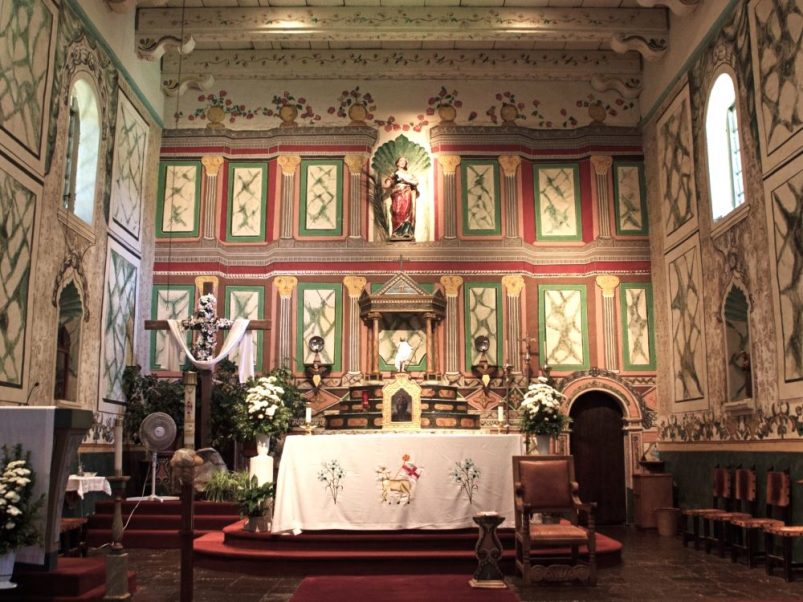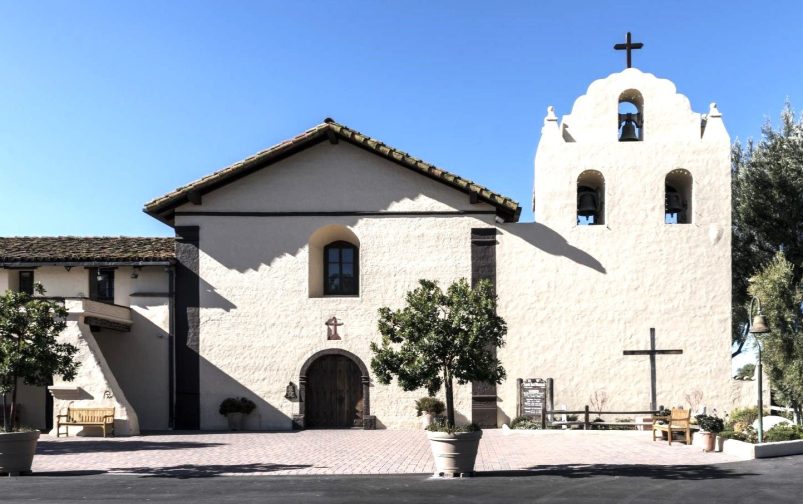Mission Santa Inés Virgen y Mártir was founded on September 17, 1804, by the Franciscan Father Estévan Tapís. Located in rolling hills, which provide one of the loveliest settings of any mission, Santa Inés has been called the “Hidden Gem of the Missions”. The Franciscans had chosen the area for the new Santa Inés Mission on a beautiful and well-watered valley inhabited by Indians who already knew about mission life. The Padres had every hope for a prosperous venture. However, bad luck was more often the rule at Mission Santa Inés.
The Mission Fathers and their Indian acolytes had not yet completed an extensive building program when everything tumbled to the ground during the earthquake of 1812. Although Mission dwellers started to rebuild at once, they spent five more years before being able to complete the rebuilding.
Then, there began to be trouble with the American Indians. After Mexico started its path to independence in 1810, the Government ceased to support the army. Soldiers in California needed to “live off the land”, which mostly meant living off the labor of Mission Indians. Quite naturally, resentment against the soldiers ran very high among these Native Americans.
In February 1824, a most bizarre incident occurred at Mission Santa Inés. Well-armed Indians overwhelmed the mission guard and burned down all the soldiers’ barracks and workshops. Then, when it appeared the fire would destroy the mission church, the Indians threw down their weapons and helped to save it. Despite the unexpected show of devotion towards the Padres, the rebellious Indian neophytes had had enough of mission life. After doing damage at two other missions, Santa Barbara and La Purísima, they disappeared into the Tulares.

When the Secularization time arrived, Santa Inés Mission benefited considerably from a ruse arranged by the one friendly Mexican Governor, Manuel Micheltoreña, and the Bishop of the Californias, Francesco Garcia Diego. Francesco Garcia Diego received some 36,000 acres of land confiscated from Mission Santa Inés for a college of religious education. The Franciscan Fathers and their successors operated the college and controlled the land for years. Although Pío Pico sold other mission properties, he could not get his hands on the college lands, which eventually were sold by the Catholic Church to private owners at a good profit.
The mission church building was never abandoned and was strong enough to withstand an earthquake in 1911 which caused the bell tower to topple. Through the intervening years, the tower was replaced, the cloister wing rebuilt a section at a time, and the church was finally refurbished with great attention given to preserving its original appearance.
Ceiling beams date back to 1817 when the present church was completed. They are of sugar pine hauled from mountains 30 miles away. The floor tiles also are original. Designs on the rear wall of the altar and the ceiling beams were painted by Indians using native vegetable colors. A statue of Saint Agnes in a niche in the center of the altar is unique because it is thought to have been created by Native artists at the mission.
Some of the Latin missals, music books on parchment, and early vestments in the excellent museum are far older than the mission itself. Restoration of the cloister wing is now complete to the original 19th arch. The modern town of Solvang today adjoins the grounds of the old mission.
